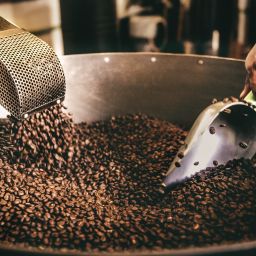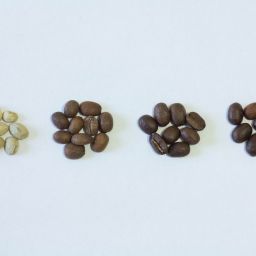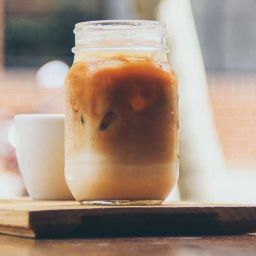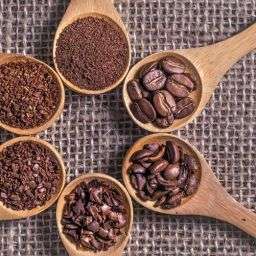
Coffee, often referred to as the elixir of life for many, has a rich history that dates back centuries. Its journey from ancient Ethiopian highlands to the global phenomenon it is today is nothing short of extraordinary. Let’s dive into the world of coffee beans, primarily focusing on the beloved Arabica.
Arabica Coffee Beans
Arabica Beans
Origin and History
Arabica coffee, with its roots in Ethiopia, is more than just a morning pick-me-up. It’s a story of culture, trade, and transformation. Legend has it that a goat herder named Kaldi discovered coffee when he noticed his goats becoming unusually energetic after eating certain berries. This accidental discovery in Ethiopia led to coffee’s spread across the Arabian Peninsula, shaping cultures and economies.
Characteristics and Flavor Profile
When it comes to flavor, Arabica beans are the crème de la crème. They are known for their:
- Sweeter, softer taste
- Higher acidity
- Subtle hints of fruits and berries
This bean is a favorite among coffee connoisseurs for its complex, nuanced flavors that vary greatly depending on the growing region.
Growing Conditions and Cultivation Challenges
Arabica beans are like the divas of the coffee world; they need just the right conditions to thrive. They prefer:
- Higher elevations
- Cooler temperatures
- Specific soil types (often volcanic)
However, these beans are also quite delicate. They are susceptible to diseases like Coffee Leaf Rust and require more attention and care than other types.
Popular Arabica Varieties and Cultivars
There’s a world of variety within Arabica beans. Some of the most popular varieties include:
- Typica
- Bourbon
- Geisha
Each variety offers a unique flavor profile, making the exploration of Arabica beans an exciting journey for coffee lovers.
Arabica in the Global Coffee Market
Arabica beans reign supreme in the global coffee market. They are the backbone of specialty coffee and are highly sought after for their quality and flavor. Despite challenges in cultivation, the demand for Arabica beans continues to grow, driven by a rising interest in gourmet coffee experiences.
Robusta Coffee Beans
Robusta Beans
When it comes to coffee, Arabica might be the star of the show, but let’s not overlook its hardy cousin, Robusta. Known for its robust nature (hence the name), Robusta is like the unsung hero of the coffee world, offering unique flavors and benefits that deserve a spotlight.
Origin and Robust Nature
Robusta coffee, scientifically known as Coffea canephora, has its origins in central and western Africa. Unlike its more delicate counterpart, Arabica, Robusta is known for its hardiness. It’s like the tough kid on the block, able to withstand harsher climates and environments. This resilience is partly due to its higher caffeine content, which not only gives a stronger kick but also acts as a natural insect repellent, making the plant less susceptible to pests.
Flavor Differences from Arabica
When it comes to taste, Robusta is the bold, intense cousin of the more refined Arabica. It’s known for its:
- Stronger, more bitter flavor
- Less acidity
- Earthy, nutty, and sometimes chocolaty notes
This distinct flavor profile makes it a favorite in blends, especially for those who crave a hearty, robust cup of coffee.
Cultivation Advantages and Global Distribution
Robusta beans are not just tough; they’re also more forgiving when it comes to cultivation. They thrive in:
- Lower altitudes
- Hotter climates
- Less ideal soil conditions
This adaptability allows for a broader range of growing regions, making Robusta a significant player in the global coffee market. Countries like Vietnam, Brazil, and Indonesia are major producers, contributing significantly to the world’s coffee supply.
Robusta in Espresso and Blends
Robusta is a star in espresso blends. Its bold flavor and rich crema make it a perfect candidate for a strong espresso shot. In many Southern Italian espresso blends, Robusta is a key ingredient, adding depth and intensity to the coffee. Its characteristics include:
- Richer crema
- Full-bodied taste
- Perfect for cutting through milk in lattes and cappuccinos
Emerging Trends in High-Quality Robusta Cultivation
Gone are the days when Robusta was just seen as a lower-quality alternative to Arabica. There’s a growing trend in cultivating high-quality Robusta beans. Farmers and coffee experts are experimenting with:
- Improved cultivation techniques
- Selective breeding for flavor
- Better processing methods
These efforts are elevating the status of Robusta in the coffee world, showcasing its potential to be not just a filler bean but a star in its own right.
Liberica and Excelsa Coffee Beans
Liberica Beans
Excelsa Beans
In the diverse world of coffee, Liberica and Excelsa beans are like the mysterious, less-known cousins in the family. While Arabica and Robusta get most of the spotlight, these two types have their unique stories and flavors that are worth exploring.
Historical Significance of Liberica
Liberica coffee beans have a history that’s as rich as their flavor. Originating from West Africa, these beans gained prominence when a coffee disease devastated much of the Arabica crop in the late 1800s. Liberica came to the rescue, particularly in parts of Southeast Asia, where it was cultivated as an alternative. This bean played a key role in saving the coffee industry during a critical time.
Unique Flavor and Growing Conditions
Liberica beans are known for their:
- Bold and somewhat fruity flavor
- Smoky, woody notes
- Full body, similar to Robusta
They grow in conditions that are quite different from Arabica and Robusta, thriving in:
- Hot, humid climates
- Lower altitudes
- A variety of soil types
Despite their resilience and unique taste, Liberica beans are still a rarity in the global coffee market.
Liberica’s Market Presence and Future Potential
Currently, Liberica beans make up a small fraction of the world’s coffee production. However, they hold significant potential, especially as climate change impacts traditional coffee-growing regions. Their ability to adapt to various climates and resist diseases makes them a valuable asset for the future of coffee cultivation.
Excelsa’s Reclassification and Distinct Flavor
Excelsa, once considered a separate species, has been reclassified as a variety of Liberica. Despite this, it boasts a distinct flavor profile that sets it apart:
- Tart and fruity
- Lighter body
- Aromatic and complex
This unique taste has made Excelsa a popular choice for adding complexity to coffee blends.
Market Share and Specialty Coffee Potential
While both Liberica and Excelsa have smaller market shares compared to Arabica and Robusta, they are gaining attention in the specialty coffee scene. Their unique flavors and stories appeal to coffee aficionados and those looking for something different. As the specialty coffee market grows, so does the potential for these lesser-known beans to make a significant impact.
FAQs
When it comes to coffee, everyone has questions. Let’s dive into some of the most common queries about our beloved beans.
Common Questions
- What are the main types of coffee beans?
Arabica, Robusta, Liberica, and Excelsa are the four main types. Each offers unique flavors and characteristics. - Which coffee bean type is the most popular?
Arabica is the most popular, known for its smooth, complex flavor.
Differences in Brewing Methods for Each Bean Type
- Arabica: Best for pour-over and drip coffee, highlighting its nuanced flavors.
- Robusta: Ideal for espresso due to its strong flavor and rich crema.
- Liberica and Excelsa: Great for experimenting with different brewing methods, from French press to cold brew, to explore their unique tastes.
Health Benefits and Caffeine Content Variations
- Arabica: Lower in caffeine, gentler on the stomach.
- Robusta: High in caffeine, perfect for a strong energy boost.
- Liberica and Excelsa: Unique antioxidants, with caffeine content varying between Arabica and Robusta levels.
Read more about Product Review: Cuisinart DCC-2650P1 Extreme Brew 12-Cup Programmable Coffeemaker.
Conclusion
As we wrap up our coffee journey, it’s clear that the world of coffee beans is as diverse as it is fascinating. From the smooth, sophisticated Arabica to the bold, resilient Robusta, and the rare, intriguing Liberica and Excelsa, each bean tells its own story.
The coffee landscape is constantly evolving, with new cultivation techniques, changing climates, and a growing appreciation for specialty coffees. This evolution invites us to explore and appreciate the vast array of flavors and stories that coffee has to offer.
So, whether you’re a seasoned coffee aficionado or a curious newcomer, there’s always something new to discover in the world of coffee. Dive into the different varieties, experiment with brewing methods, and savor the unique tastes and aromas of each bean. Your perfect cup of coffee is out there, waiting to be discovered!
Read more about Product Review: Cuisinart DGB-400 Automatic Grind and Brew 12-Cup Coffeemaker.









